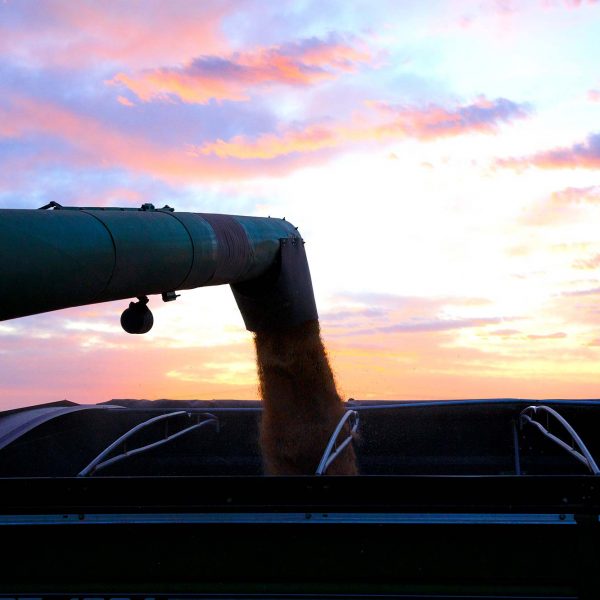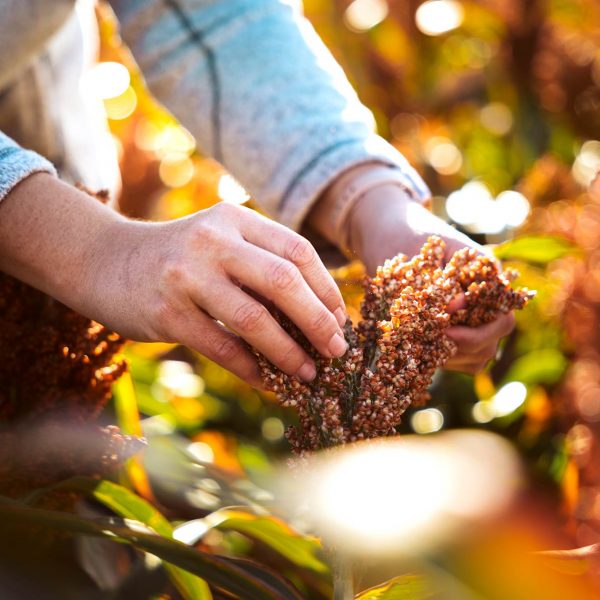
The Sorghum Plant – Boot to Maturity
The Sorghum Plant – Boot to Maturity
Brent Bean, Sorghum Checkoff Director of Agronomy
This article continues where The Sorghum Plant – Emergence to Boot article ends, or to put it in a human perspective from infancy through the teenage years. This article will discuss the plant’s early adulthood as it leaves the boot stage through reaching full maturity.
The boot stage is the start of a 20 day period where stress from high temperatures, lack of adequate water, or from disease and insects can greatly influence yield potential. Stress early during this phase will shorten the peduncle, which is the stalk that the panicle is attached to. This can cause a loss in harvest efficiency if the panicle is not sufficiently raised above the upper leaf canopy, as well as promote mold and poor drying of the grain on the lower portion of the panicle.
The sorghum plant leaves the boot stage and enters the heading stage when the top of the panicle can be seen emerging from the flag leaf sheath at the top of the plant. Unless stress slows the development, the panicle will fully emerge within 3 days. At this stage, water and nutrient use are at their peak. At this stage fields should be scouted in those regions where anthracnose and other viral leaf diseases are an issue. A fungicide should now be applied if symptoms are present on the lower leaves and the forecast is for wet, humid weather that will cause the diseases to flourish. Growers should also scout for sorghum aphid as infestation levels above threshold will significantly lower yield through the hard dough stage.
Sorghum begins flowering soon after, and sometimes even before, the head has completely emerged from the boot. Flowering starts at the top of the panicle and progresses downward over a four-to-seven day period, depending on weather conditions and the hybrid. Sorghum has perfect flowers, meaning that each flower contains both anthers and the female stamen. Unlike corn, where pollen must travel from the tassel to the ear, sorghum pollen has to move only a very short distance for successful pollination. For this reason, sorghum can withstand heat stress better than many other crops at this critical stage. The main risk to sorghum during flowering comes from midge. Late-planted sorghum is particularly vulnerable to midge infestation. In the mid-South, many growers elect to apply an insecticide for midge control at flowering without scouting, assuming midge will be an issue. However, midge will not always be present, so scouting every other day during flowering is the recommended practice. Growers are encouraged to see state extension service midge recommendations for specific guidelines. Once sorghum has completed flowering, it is no longer vulnerable to midge damage.
Once flowering is completed, the grain kernel quickly becomes fully expanded and will contain a watery milky substance that quickly transitions to the soft dough stage. Although there are several insects that can cause damage to the developing kernel, the most widespread are fall armyworms and corn earworms. An insecticide application usually is warranted when one to two worms that are at least 0.25 to 0.5 inches in length are present per panicle.
The hard dough stage is reached when the majority of grain in the head can no longer be mashed between the thumb and index finger. At this stage, approximately 75 percent of the grain’s final dry weight has now accumulated, and most of the grain’s seed coat color has turned from green to its final color. The grain is now too hard for insects to cause major yield loss. During this time, stress on the plant from drought, diseases or insects can potentially lower test weight and lead to an increase in lodging. For this reason, irrigated growers are discouraged from terminating irrigation too soon. The grain is considered to have reached maturity once hard starch has formed at the base of the kernel.
In all, it takes 40 to 50 days once the panicle is completely visible to reach fully matured grain. Moisture content of the grain will be between 25 and 30 percent and will need to dry down to a suitable level prior to harvest. This moisture level for harvest will be dependent on if drying facilities are available or if the grain will go directly into storage.




